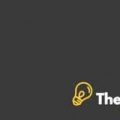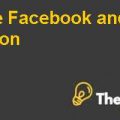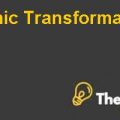
Dollar General Going Private
Question 1
Conduct a detailed valuation overview (DCF, trading comps, precedent transactions, LBO and other relevant valuation methodologies). Please use external resources as necessary, if certain details are not in the case. Please include a summary with a “football field”.
The valuation for the proposed deal has been performed on the basis of the range of valuation methodologies. These valuation methods include the precedent transaction approach, trading comparables, discounted cash flow method and the leverage buyout valuation method. Goldman Sachs and Lehman Brothers are offering a debt of about $ 380 million for this transaction. First of all beginning with the LBO valuation and then the DCF valuation a number of assumptions have been made, which are as follows:
The average of the historical ratios as a percentage of sales has been used for the EBITDA, depreciation and amortization expense, the investment in net working capital and the investment in capital expenditures.
The terminal growth rate has been taken to be 1% looking at the nature of the US retail industry.
The 2006 and 2007 average cost of debts has been used as the cost of debt in the WACC and the present value of tax shield calculations.
The typical capital structure ratio of 90% debt and 10% equity has been used in the calculation of the WACC.
Since the company is considered as a leader in the deep discount retail channel therefore, for that reason the future sales of the company for the following five years have been forecasted on the basis of the forecasted growth rates of the total US sales for the company in the deep discount retail channel of the retail market as shown in exhibit 4 of the case.
Based on these assumptions and also taking the exit multiple as 7.2 as shown in the case exhibit 7, the DCF and the LBO low and high values for the transaction have been computed. The mean of the transaction values are $ 6138 and $ 6321 in thousands based on the DCF and the LBO methodology.
For the valuation of the transaction based on LBO model, the valuation for the base case and the debt portion has been performed separately, since the level of the debt is significant in this transaction. The unlevered free cash flows have been calculated, which have been discounted at the company’s cost of equity, whereas in the case of the DCF model, the levered free cash flows have been calculated which have been discounted at the company’s cost of capital.
Furthermore, the valuation has also been performed based on the precedent transaction approach by looking at the exhibit 8 transaction values. Moreover, low and higher values have been derived. Similarly, the trading comparable has been used to derive the low and the high transaction values, which could be seen in the football field analysis. All the low, high and the mean values and the multiples could be seen in the input table for the football field analysis as shown below:
FOODBALL FIELD INPUTS
Share Price EV EV/EBITDA
Low High Mean Low High Mean Low High Mean
Precedent Transaction Approach 3.266 19.345 11.305 1020.828 6046.32 3533.574 1.36 8.08 4.720
Multiple Comparable Analysis 3.266 23.464 9.041 1020.828 7333.788 2825.861286 7 10.9 8.9
DCF Valuation $15.04 $24.23 $19.64 $4,701.54 $7,574.57 $6,138.06 6.28 10.12 8.20
LBO Valuation $16.36 $24.09 $20.22 $5,112.36 $7,529.77 $6,321.06 6.83 10.06 8.44
The football field analysis graph could also be seen in the excel spreadsheet, which compares all the share prices derived through each of the valuation methods............
This is just a sample partial case solution. Please place the order on the website to order your own originally done case solution.












